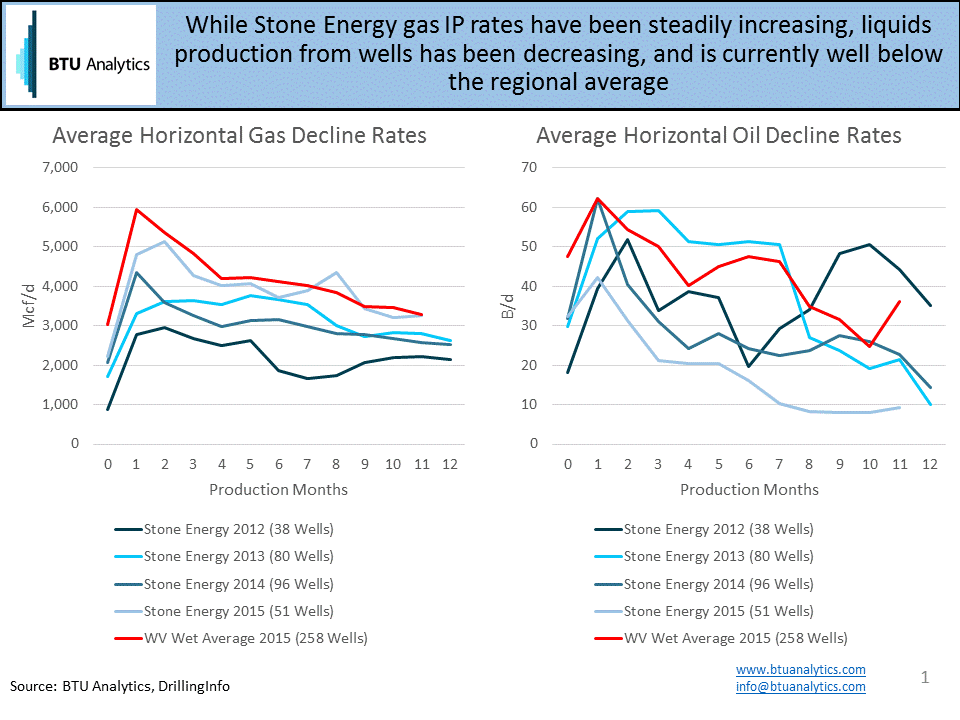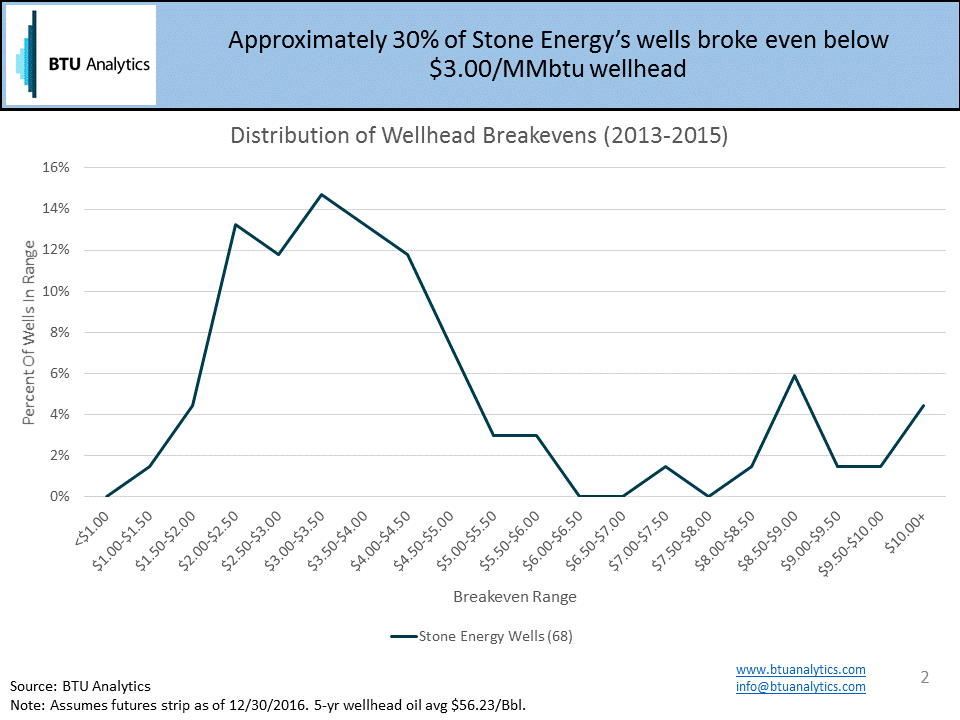EQT Corporation (NYSE:EQT) announced last week that the company was the winning bidder in a bankruptcy auction for 53,400 Marcellus acres previously held by Stone Energy. The $527 million purchase price for the EQT Marcellus acquisition includes drilling rights for 44,100 net acres in the Utica and are in Wetzel, Marshall, Tyler and Marion Counties where EQT already holds significant acreage. How does well performance on the new acreage acquired from Stone stand up to other wells in the area?

The above chart shows the breakdown of the gas and oil IP rates and decline curves for the existing horizontal wells that EQT will be acquiring, and the results show some drastic improvements in well performance over the years (note that 2016 data is omitted because West Virginia has not yet released any 2016 production data). However, the wells are still below the average well in the liquids rich part of West Virginia, but not by much. The liquids side of these wells tells a slightly different story. Stone Energy’s wells actually show declining oil IP rates over time, which may indicate a shift to drier portions of the aforementioned counties.

The above chart shows the distribution of estimated wellhead breakeven prices for Stone wells with first production in 2013-2015. While many of the wells are economic at today’s prices, more than half are not, based on BTU Analytics, estimates. Looking at the sample, we can see about 30% of wells would break even below $3.00/MMBtu at the wellhead. However, this doesn’t account for Appalachian basis differentials. With that in mind, the more relevant number becomes the 19% of wells that are breaking even below $2.50/MMBtu.
While the well results associated with this acquisition are one data point, understanding other operator’s results surrounding the undeveloped acreage provides additional clarity. The map below shows the current breakevens of recently drilled areas in the counties of interest, along with an indicator of where the current Stone Energy wells are located.

What can be gleaned from this is that even though the acreage that has been drilled by Stone Energy falls roughly in with the average, certain areas show impressive returns at current liquids pricing. Further, if liquids prices move higher in the future, the natural gas breakevens would improve materially.
To gain more insight into operator and acreage analysis, check out BTU Analytics’ E&P Positioning Report.









